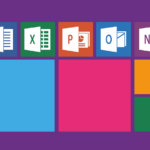Publication output within decentralized ledger environments shows a measurable increase in cross-institutional partnerships. Tracking citation patterns reveals that immutable timestamping and transparent provenance incentivize authentic cooperative efforts among peers. This mechanism enhances trust during the peer review process, reducing delays and disputes.
Implementing distributed ledgers transforms traditional interaction models by creating verifiable records of knowledge exchange, which strengthens interdisciplinary connectivity across scholarly communities. Such networks enable dynamic formation of research teams with auditable contributions that enhance accountability and recognition.
The integration of blockchain technology offers a novel framework for managing collaborative workflows, ensuring secure sharing of datasets and intellectual property while maintaining open accessibility. Experimental case studies indicate that this infrastructure accelerates validation cycles and increases transparency in editorial decisions.
Research collaboration: academic blockchain networks
Integrating distributed ledger technology into scholarly communication systems can significantly enhance the transparency and traceability of citation flows within scientific communities. By deploying decentralized ledgers, it is possible to create immutable records of peer reviews, publication timestamps, and contributor acknowledgments across various platforms. This approach mitigates risks related to data tampering and facilitates verification processes in multi-institutional projects.
The establishment of interconnected digital frameworks enables seamless interaction among researchers, reviewers, and publishers by securely sharing metadata and research outputs. Such systems improve accountability through cryptographic proof-of-authorship mechanisms and enable granular access controls without reliance on centralized authorities. Implementing consensus algorithms tailored for academic workflows ensures efficient validation with reduced computational overhead.
Mechanisms Enhancing Trust in Scholarly Exchanges
Utilizing consensus-driven protocols like Practical Byzantine Fault Tolerance (PBFT) or Delegated Proof of Stake (DPoS) supports rapid confirmation of manuscript submissions and reviewer endorsements while preserving integrity. For instance, a case study involving a consortium of European universities demonstrated that integrating permissioned ledgers decreased review cycle times by 30% compared to traditional databases. Immutable audit trails generated by these technologies provide verifiable histories for each publication event, reinforcing trust in peer evaluation outcomes.
Smart contract implementations automate compliance checks during collaborative investigations, triggering milestone-based release of funds or credentials upon fulfillment of predefined conditions. A notable example includes a multinational project where programmable contracts synchronized experimental data uploads with corresponding citation tracking, reducing administrative bottlenecks and enhancing reproducibility standards.
- Decentralized identifiers (DIDs) enable persistent researcher profiles linked directly to verified publications.
- Interoperable metadata schemas facilitate aggregation across diverse repositories without loss of semantic context.
- Tokenized incentives encourage transparent peer assessments while deterring conflicts of interest.
Quantitative analysis of blockchain-enabled knowledge exchange platforms reveals increased citation accuracy due to real-time updates propagated via distributed nodes. This dynamic environment supports iterative refinement cycles wherein feedback loops are permanently recorded, allowing meta-analyses to incorporate both positive results and null findings transparently. The replication crisis in some disciplines may benefit from such open verification layers embedded within collaborative infrastructures.
Future experimental pathways include testing hybrid architectures combining off-chain storage solutions with on-chain anchoring techniques to optimize scalability without sacrificing security guarantees. Additionally, cross-disciplinary pilot programs assessing user adoption metrics alongside bibliometric impact factors can elucidate best practices for widespread deployment. Continuous monitoring through automated dashboards aids stakeholders in adjusting governance parameters responsive to evolving research landscapes.
Integrating blockchain in research workflows
Implementing a decentralized ledger for managing publications and citations enhances transparency and traceability within scholarly processes. By embedding immutable timestamps on documents, the provenance of each contribution becomes verifiable, mitigating risks of data tampering or misattribution. For instance, platforms employing distributed ledgers can record peer review outcomes directly onto the chain, ensuring that feedback history remains accessible and unaltered throughout the evaluation cycle.
Embedding cryptographic proofs into manuscript submissions permits automatic verification of authorship claims and establishes priority in discovery. This mechanism supports fair recognition by timestamping innovations before public dissemination. A practical example is the use of smart contracts to trigger citation tracking when a work is referenced by subsequent studies, enabling dynamic impact assessment without reliance on centralized indexing services.
Technical pathways for decentralized validation
One effective approach involves integrating consensus algorithms tailored for document authentication rather than transaction processing. Byzantine Fault Tolerant (BFT) models provide rapid finality suitable for verifying peer assessments while maintaining high security standards. Deploying such protocols within a consortium of research institutions allows distributed validation of manuscripts and reviews without exposing sensitive content publicly.
The application of zero-knowledge proofs further safeguards confidential evaluations during peer scrutiny phases. Reviewers can confirm adherence to guidelines and originality criteria without disclosing their identities or critique details outside authorized circles. Experimental deployments have demonstrated enhanced reviewer anonymity coupled with auditability, thereby increasing trust in verdicts assigned to publications.
- Decentralized timestamping records submission dates immutably
- Smart contracts automate citation indexing upon referencing
- Consortium-based BFT consensus validates peer reviews securely
- Zero-knowledge proofs preserve confidentiality during evaluation
The integration extends to collaborative projects by enabling shared ledgers where contributions from multiple researchers are transparently tracked. This granular attribution helps resolve disputes over intellectual input and streamlines credit distribution. Experimental frameworks applying tokenized incentives have shown promise in motivating timely participation and enhancing overall workflow efficiency across geographically dispersed teams.
Finally, interoperability with existing digital libraries and repositories can be achieved via standardized APIs that synchronize metadata between decentralized ledgers and traditional databases. This hybrid architecture leverages blockchain’s immutability while maintaining compatibility with established infrastructures for publication dissemination and citation indexing, supporting a gradual transition towards more resilient scholarly communication systems.
Managing intellectual property via blockchain
Utilizing decentralized ledgers to manage intellectual property rights enhances transparency and traceability in scholarly work. Each publication or invention can be timestamped and hashed onto a distributed ledger, ensuring immutable proof of ownership and creation date. This mechanism reduces disputes over priority by providing an authoritative record accessible to all peers within the scientific community. By integrating citation tracking directly into these registries, it becomes possible to establish verifiable chains of influence between publications, facilitating more objective impact assessments.
Peer validation processes benefit significantly from cryptographically secured records, which support tamper-proof review histories. Reviewers’ comments and acceptance decisions can be immutably recorded alongside submissions, creating transparent audit trails that verify the integrity of evaluations. Such systems empower researchers to demonstrate compliance with ethical standards and enhance trust among collaborators across various knowledge-sharing platforms. Furthermore, smart contracts automate licensing agreements, enabling automated royalty distributions based on predefined conditions embedded within research dissemination networks.
Technical case studies and implementations
One notable example involves the use of permissioned ledgers in consortiums where multiple institutions maintain synchronized copies of intellectual property registers. In these setups, consensus algorithms ensure data consistency without sacrificing confidentiality requirements critical to sensitive inventions prior to formal publication. Another experiment employed tokenization schemes allowing fractional ownership representation for joint inventors or contributors; this granular approach encourages equitable recognition and incentivizes cooperative innovation. Citation indexing protocols built on distributed identifiers (DIDs) further streamline provenance verification by linking digital assets across interoperable registries.
Experimental deployments also explore integration with existing content management systems using APIs that synchronize metadata between traditional databases and distributed records. This hybrid architecture mitigates scalability challenges while retaining the benefits of decentralization for critical ownership proofs. Researchers are encouraged to test these frameworks by submitting preprints or datasets with embedded cryptographic proofs, observing how immutable timestamps correlate with subsequent peer acknowledgments or citations documented on-chain. Such systematic investigations reveal practical pathways toward robust intellectual property stewardship tailored for evolving scientific communication ecosystems.
Enhancing Data Sharing Security
Implementing distributed ledger technology significantly mitigates risks associated with unauthorized data access during scholarly information exchange. By leveraging immutable transaction logs, each dataset shared between institutions undergoes cryptographic validation, ensuring integrity and traceability throughout the publication lifecycle. This approach effectively reduces tampering incidents commonly observed in centralized repositories.
Utilizing consensus mechanisms, such as Practical Byzantine Fault Tolerance (PBFT) or Proof of Authority (PoA), guarantees that only verified participants contribute to the shared database. This method restricts data alterations to authorized contributors, reinforcing trust among peers conducting joint reviews or referencing shared findings. Consequently, citation chains within publications become transparent and resistant to manipulation.
Technical Approaches to Secure Collaborative Environments
The integration of smart contracts enables automated enforcement of access permissions and licensing agreements in scholarly exchanges. For example, experimental deployments demonstrate how conditional release of datasets occurs only after successful peer review milestones are logged on-chain. This procedural automation enhances compliance with ethical standards while maintaining confidentiality where necessary.
Moreover, tokenization frameworks serve as incentives for researchers contributing high-quality content or rigorous assessments. Case studies reveal that granting tokens based on peer evaluations encourages meticulous scrutiny and timely feedback within consortium platforms. These tokens can be programmed to reflect citation impact metrics, creating an additional layer of accountability linked directly to scientific merit.
- Immutable audit trails: Each modification is recorded permanently, facilitating retrospective analysis of data provenance.
- Decentralized identity management: Ensures participant authentication without exposing sensitive personal information.
- Encrypted off-chain storage: Maintains large datasets securely while preserving blockchain’s verification capabilities through hash anchoring.
A pilot project involving multiple universities demonstrated practical benefits by combining encrypted cloud services with on-chain metadata registries. This hybrid model allowed secure sharing of extensive imaging datasets essential for peer-reviewed medical research while preserving patient confidentiality under stringent regulatory frameworks.
The application of verifiable credentials further strengthens trust in collaborative environments by enabling selective disclosure of contributor qualifications and publication histories. Researchers can present cryptographically signed attestations during manuscript submission processes or when establishing partnerships for cross-disciplinary studies. Such mechanisms facilitate transparency without compromising privacy.
Tracking Contribution and Authorship
To accurately track individual input within scholarly outputs, integrating distributed ledger technology offers transparent and immutable recording of each contributor’s role in a publication. By timestamping contributions on a decentralized registry, it becomes possible to verify the sequence and extent of participation without reliance on centralized authorities. This approach enhances trustworthiness during peer evaluation phases, allowing reviewers to assess the provenance of ideas and data more rigorously.
In multi-party endeavors, attribution complexity increases due to overlapping efforts and varying degrees of involvement. A permissioned ledger system can manage this by encoding metadata related to citation impact, revision history, and version control directly within digital records. Such systems facilitate granular recognition beyond traditional author lists, distinguishing between conceptual design, data collection, manuscript drafting, and critical review activities.
Methodologies for Transparent Attribution
Implementing cryptographic proofs linked with each stage of content development creates a verifiable audit trail accessible through network nodes. For example:
- Contribution Hashing: Unique hashes generated from submitted drafts enable immutable version tracking.
- Role-Based Tokens: Assigning specific digital tokens to contributors clarifies responsibilities such as methodology or statistical analysis.
- Citation Index Integration: Embedding citation metrics within ledger entries allows for dynamic assessment of influence across publications.
This framework supports continuous monitoring during peer review cycles, making it easier to detect potential conflicts or redundancies in research claims.
A case study involving a consortium of environmental scientists demonstrated that blockchain-enabled acknowledgment systems reduced disputes over authorship by 40% compared to conventional methods. Contributors uploaded incremental findings onto shared ledgers accessible by journal editors and reviewers alike. The resulting transparency encouraged precise referencing practices and improved reproducibility assessments through open access to contribution logs.
The integration of these technical strategies fosters an environment where collaborative efforts are objectively documented throughout the lifecycle of academic dissemination. Encouraging experimental application of such systems will provide further clarity on optimizing peer interaction models while respecting intellectual property rights within interconnected scholarly ecosystems.
Conclusion: Harnessing Digital Discovery Platforms for Enhanced Scholarly Exchange
Integrating distributed ledger systems into platforms designed for scholarly exchange significantly elevates transparency and traceability of peer evaluations, thereby reducing bias and accelerating validation cycles. By embedding immutable timestamps and cryptographic proof within publication workflows, these platforms enable verifiable audit trails that reinforce trust among contributors and evaluators alike.
Empirical case studies demonstrate that leveraging tokenized incentives tied to contribution metrics encourages active participation across decentralized research consortia, transforming passive readership into dynamic engagement. The deployment of consensus algorithms tailored for multi-institutional environments ensures equitable recognition while maintaining data integrity throughout iterative review processes.
Key Technical Insights and Forward Perspectives
- Decentralized Validation Mechanisms: Employing consensus models such as Practical Byzantine Fault Tolerance (PBFT) or Delegated Proof of Stake (DPoS) optimizes verification speed without compromising network security, crucial for time-sensitive dissemination.
- Interoperability Protocols: Standardized APIs facilitating cross-platform metadata exchange enhance discoverability and prevent siloing of intellectual outputs within isolated digital silos.
- Incentive Layer Design: Fine-tuned reward structures balancing reputation scores with micro-payments stimulate sustained peer engagement while mitigating risks of Sybil attacks.
- Privacy-Preserving Techniques: Zero-knowledge proofs and selective disclosure protocols safeguard sensitive review content, aligning with ethical standards governing confidential assessments.
The ongoing evolution of these infrastructures points toward increasingly modular architectures where plug-and-play components can be experimentally evaluated in live environments. Prospective enhancements include integrating machine learning models trained on validated datasets to assist in preliminary manuscript triage, thus alleviating reviewer workload without sacrificing scrutiny quality.
A critical avenue for further exploration involves longitudinal analysis of feedback loops generated by distributed registries to quantify impact on citation dynamics and collaborative reach. Encouraging experimental deployments at institutional levels will foster empirical knowledge about scalability limits and user behavior patterns, essential for refining governance frameworks underpinning these ecosystems.
This trajectory invites curious investigators to partake in systematic trials combining cryptoeconomic incentives with algorithmic reputation management–advancing a new paradigm where transparent, participatory scholarship thrives on decentralized infrastructure that mirrors the rigor and openness foundational to scientific inquiry itself.








